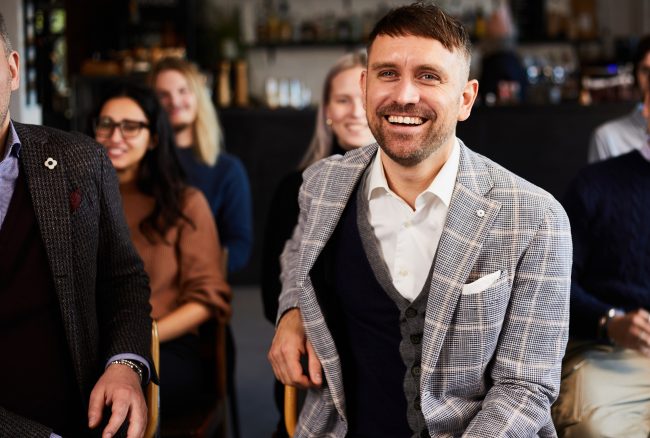The thing about first impressions is, you only get to make one. So make it good!
First impressions are everything. This old cliché holds particularly true for business events.
A good first impression makes guests feel at ease and opens their minds to new messages and ideas. And that is an essential requirement for achieving your event targets.
”You can only make a first impression once. If you blow that, no amount of money or Michelin star meals will save you”, says Woltti Group Business Director Jarkko Kivikoski.
You have to be prepared to make an effort for the guest’s experience already in the planning phase.
”A good first impression can even redeem other blunders.”
Guests don’t like feeling lost – so notice them
At an event, the role of the first impression is to make the guest feel enthusiastic and receptive.
”Particularly in mass events, guests are often left to wander about by themselves, without anybody really paying attention to them”, Jarkko Kivikoski says.
The mistake is understandable, but a big one. A confused person is also irritated and frustrated. Your messages will not reach them effectively in such a state.
Thankfully, there is an easy remedy. Whether your event is a dinner for ten or conference for hundreds, you have to welcome every guest personally and ensure that they are aware of what is going to happen next. It is a matter of making an effort.
”The Nordic Business Forum is a great example. Even though the event is huge, employees brimming with enthusiasm greet every participant, make sure that they can find the cloakroom and tell them where to go for the programme and when.”
Transitions are the key to making an impression
Even though you can only make a first impression once, every event presents several possibilities for making an impression when guests move from one area to the next.
”It is easy to become too enamoured with your event designs. When organising an event, you should always put yourself in the shoes of the guests and think about the transitions they will encounter”, Jarkko Kivikoski says.
Indeed, one way of looking at events is as a series of first impressions. Transitions include the entrance, going to the party area, or finding your seat and getting food from the buffet. Each transition can be used to create new enthusiasm for the guest.
”If you want to organise a good event that tells a story, you have to identify the parts that will leave an impression. Transitions are the points at which you can change people’s attitude to your message and goals – one way or the other.”
Charm your guests again and again
A guest’s feelings for the event are created and consolidated by a chain of first impressions. Identifying the transitions and creating surprises will generate memories and stories that people will share from the event.
- The invitation creates a framework for the event and for what the guests can expect.
It can be compelling or not.
- The basis for the first impression is created by rational factors. If parking or finding the venue is a challenge, the first impression has failed, and vice versa.
- Emotions reinforce the rational impression. Even if the rational part works, you can achieve a weak first impression at best if human interaction and positive emotions are lacking.
- Because every transition creates a new first impression, you need to keep looking after it. It is not enough to give guests a great first impression of the event – you have to repeat the feeling at every turn.
Would you like to charm your guests? Contact us jarkko.kivikoski@wolttigroup.fi









